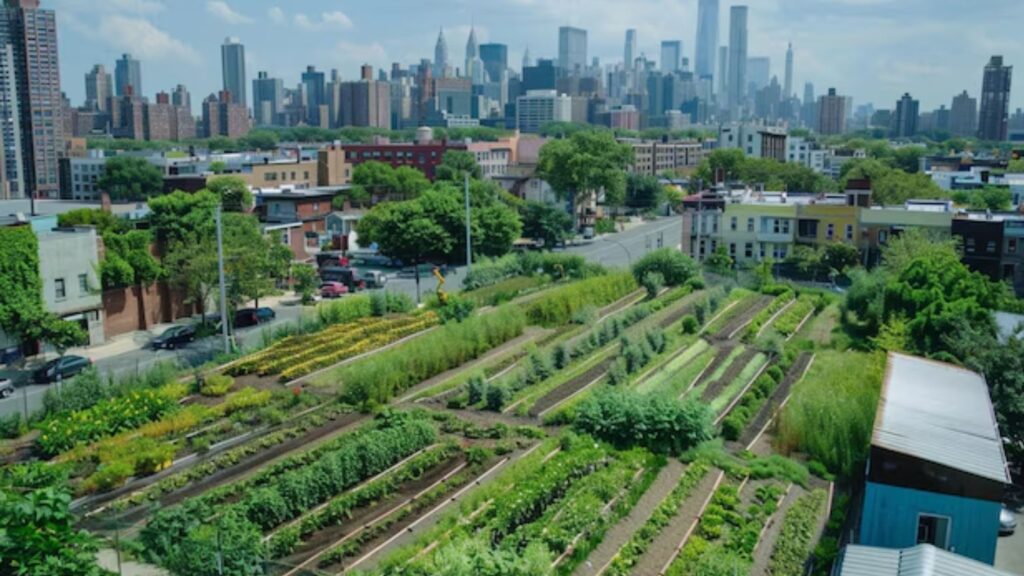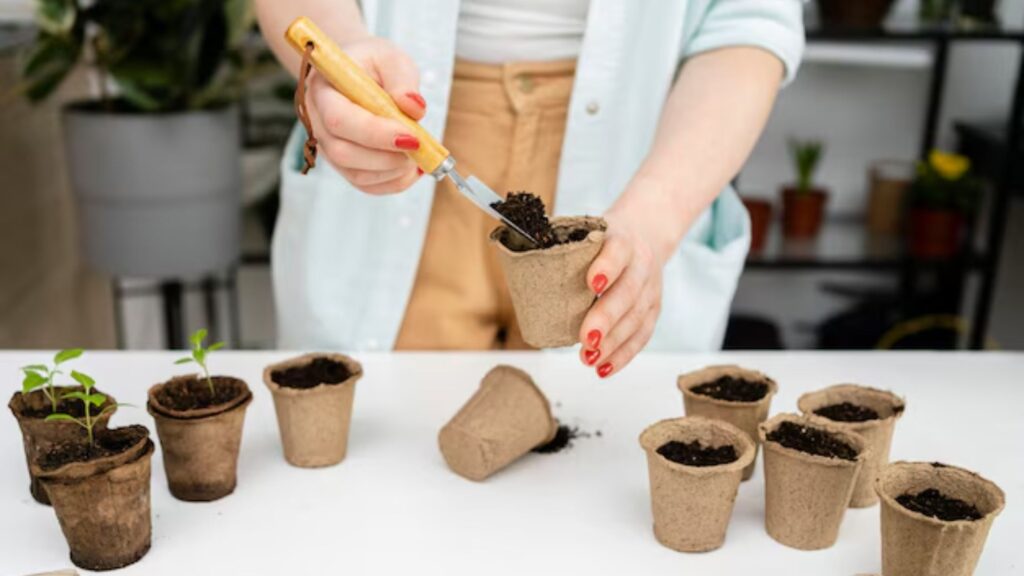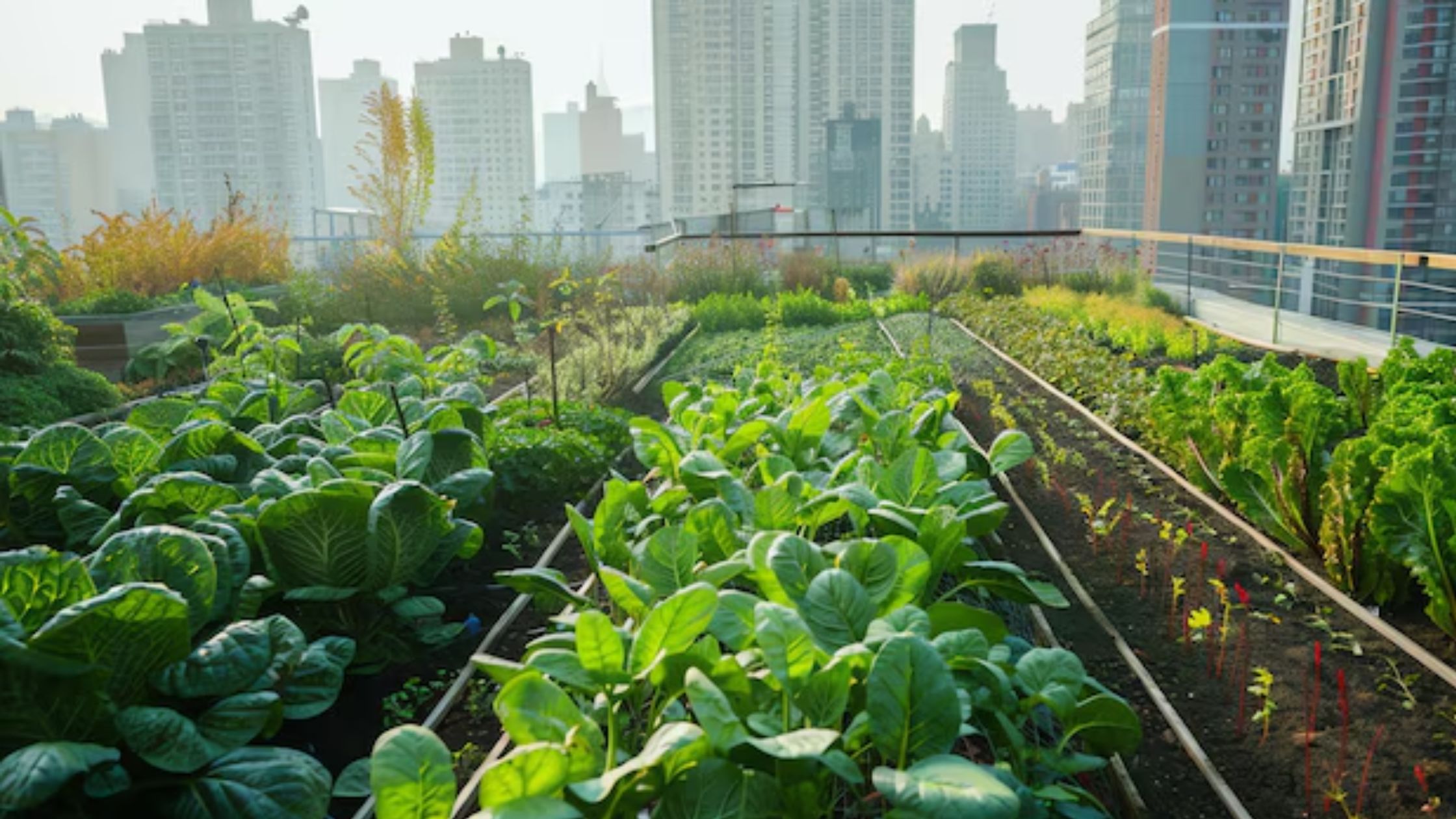Starting a local urban farming business is a great opportunity to provide your community with fresh, locally grown produce and herbs, and to get started with minimal investment. Start by growing your own crops using small spaces like rooftops, balconies, or backyard gardens. Opt for cost-efficient methods like container gardening and vertical planting to maximize space and reduce land requirements. Seed starting and DIY composting are also inexpensive methods that can reduce your start-up costs.

Table of Contents
To ensure a successful start, focus on strengthening local relationships and leveraging community resources. Consider partnering with local organizations for support and to gain access to ingredients. Focus on reaching your customers directly by participating in farmers markets or local food fairs. By starting small and expanding slowly, you can grow your urban farming plan in a sustainable and affordable way, making fresh produce accessible to your neighborhood and managing costs effectively.
1. Planning: Prepare a business plan and choose crops
Preparing a business plan is crucial to the success of your urban farming venture. It involves clearly setting out your objectives, goals, and potential challenge areas. Decide on the type of crops you want to grow, such as vegetables, herbs, or seasonal plants. Also, include a financial plan, marketing strategy, and sales expectations. This will give you a clear guide and lay a strong foundation for your Urban Farming Business.

Consider the local climate, soil conditions, and existing demand when choosing crops. Choose plants that can grow well in your area and have a good demand in the local market. You can also consider which crops grow fast and can be more profitable. Select the right type of seeds and soil for crop growth that is suitable for your chosen crop.
Once you have planned and selected crops, buy the necessary equipment and materials for your garden or farm. Make sure you have all the necessary resources such as seeds, manure, water, and fertilizers available. Also, work on a marketing and sales strategy so that your products reach local markets and customers. Thus, a well-thought-out plan and the right crops will help you set up your urban farming business successfully.
2. Set Up: Prepare the Space with Containers, Soil, and Seeds
Preparing the right space is a crucial step for urban farming. First, determine how much space you have and what type of container you will use. If you have limited space, container gardening can be an effective solution. You can use plastic pots, old cans, or special gardening containers. Make sure the containers have proper drainage so that the plants are not affected by overwatering.

The quality and type of soil is also important for crop growth. Buy high-quality potting soil or garden soil that is suitable for your chosen crops. You can increase the nutrient content of the soil by adding compost and fertilizers. If you are doing vertical gardening, make sure that the soil in your container is well adjusted so that the roots of the plants can grow healthy and strong.
Now select the seeds and sow them properly. When buying seeds, make sure they are fresh and healthy. Sow the seeds at the indicated depth and distance before planting them in containers. Water the seeds regularly and make sure they receive the right amount of sunlight. Thus, with the right location preparation and proper care, your crops will grow healthy and fast.
3. Plant: Start planting and manage growth
Planting crops is an important part of your urban farming venture. After sowing the seeds at the proper depth and distance, water them well so that the seeds can germinate. If you plant purchased seedlings, make sure to carefully transfer the roots of the plants to the container and compact the soil well. It is also important that you provide enough space to each plant so that they can grow in a healthy manner.

Plant growth is managed through regular care. To ensure this, water regularly and provide manure and fertilizers to the plants from time to time. Keep an eye on the condition of the plants and identify any signs of pests or diseases immediately. Use natural measures for pest control, such as spraying neem oil or insecticides, so that your plants remain healthy.
Monitor the growth of the plants and make necessary amendments according to their condition. For example, if the plants need more sunlight, move them to a place where they can get enough light. Also, provide pruning and support to encourage plant growth. Regular care and proper management will keep your crops healthy and productive, making your urban farming efforts successful.
4. Marketing: Promote and sell products through local markets or online
To successfully market your products, you must first gain recognition in local markets. Participate in local farmers markets, haats, and community fairs. Display your products attractively and explain the benefits of freshness and quality to customers. Also consider partnering with local shopkeepers and restaurants so that they can include your fresh products in their menus.

Using online platforms can increase the reach of your products. Create a simple website or social media page where you can share pictures, descriptions, and prices of your products. List your products on e-commerce sites for online sales and provide regular updates and offers to attract customers. Promote and advertise using social media, and connect with local food lovers and the community.
Pay attention to customer feedback and use their feedback to improve your products and services. Provide good customer service and promptly respond to their queries to ensure a satisfactory customer experience. Regular promotions, special discounts, and participation in local events will increase the demand for your products and strengthen your business’s recognition. Thus, with effective marketing strategies, you can successfully sell your urban farming products.
5. Evaluation: Monitor progress and adjust strategies as needed
Monitoring progress regularly is extremely important for the success of your urban farming business. Pay attention to plant growth, production quality, and sales figures. Make sure your crops are healthy and growing on time. If any problems are faced, such as pest attacks or stunted plant growth, find solutions immediately.

Based on monitoring progress, make adjustments to your strategies as needed. If you notice that some products are more popular, consider increasing their volume or focus more on marketing them. Conversely, if some products are not selling as expected, their production or marketing strategies may need to be changed.
Evaluate your Urban Farming Business performance annually or seasonally and make plans for the future. Get feedback from your customers and incorporate it into your business development. Thus, constant evaluation and adjustments can help you constantly improve your urban farming business and adapt to the changing needs of the market.
6. Investment range: ₹10,000 to ₹30,000, which includes setup, seeds, soil, containers, and initial marketing
An investment of ₹10,000 to ₹30,000 is sufficient to start an urban farming business, covering all the necessary aspects. The initial cost consists first of all of the setup costs, such as containers, garden pots, and infrastructure. These costs will depend on the location and gardening technique you choose. If you use smaller or low-cost containers, the overall expense may be less.

The quality of seeds and soil is also an important part of the investment. The price of seeds depends on their type and quality, and purchasing good quality soil and compost is also essential. Seeds typically cost between ₹500 and ₹2,000, while soil and compost can cost ₹2,000 to ₹4,000, depending on the size and type of your production.
Initial marketing costs are also included in this investment range. You need to budget an additional ₹2,000 to ₹5,000 to spend on setting up stalls in local markets, social media advertising, and branding materials. Thus, a total investment of ₹10,000 to ₹30,000 is enough to set up your urban farming business and ensure initial successes.
7. How much can you earn from this business
The estimate of your earnings from an urban farming business depends on several factors, such as the variety of products, their quantity, and the local market demand. Typically, if you start with small quantities and build a good network in the local market, you can earn ₹5,000 to ₹15,000 per month. With high-quality products and good marketing strategies, your earnings can increase.

As your business grows and you grow more crops, your earnings can also increase. If you regularly sell your products in local markets and online platforms, you can earn ₹20,000 to ₹40,000 a month. Additionally, seasonal crops and specialty products, such as organic herbs or vegetables with high demand, can further increase your earnings.
You can maximize your overall earnings by focusing on productivity and cost control. Reducing costs, such as reducing material and production expenses, and increasing sales volume will increase your profits. Regular evaluation and strategy improvements can lead you to a more stable and higher-earning business. Thus, your earning potential from urban farming business depends on your effort and business management.
Conclusion
Starting a local urban farming business is possible with little investment and offers a sustainable and profitable opportunity. By smartly utilizing small spaces, adopting cost-efficient techniques, and harnessing local resources, you can establish a successful and effective gardening project. Through this business, you can not only increase your income but also provide fresh and healthy produce to your community. With planning, dedication, and local support, you can make your urban farming dream a reality and make a positive difference.
If u want to Watch the Video You can visit to our You tube Businovations Channel and watch the video……
Click the link to read the Recent Posts….
Starting online auction Business with Simple Steps and High Profit (257)

